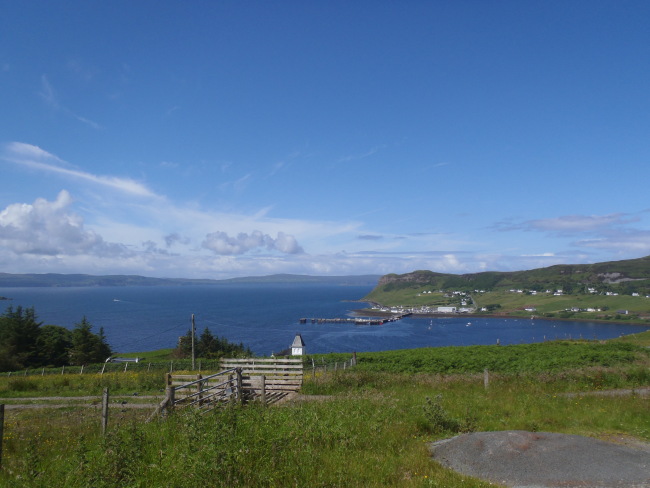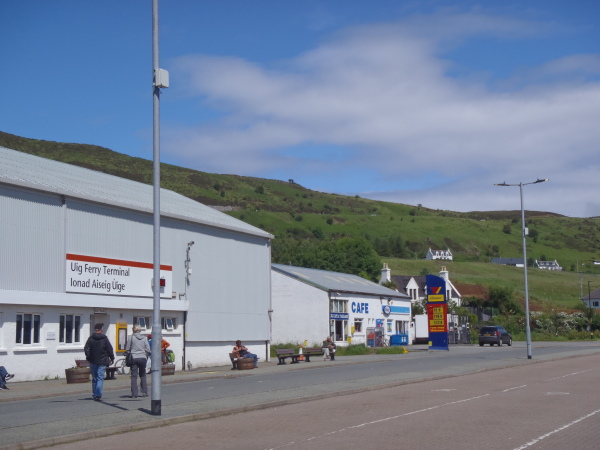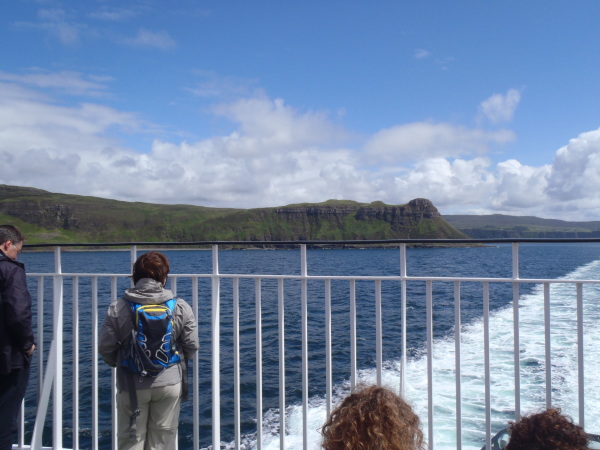Our group of 8 assembled at the Inverness train station, and proceeded by van through the mainland Highlands to Skye.
Highlands, where they cut down all the trees centuries ago:
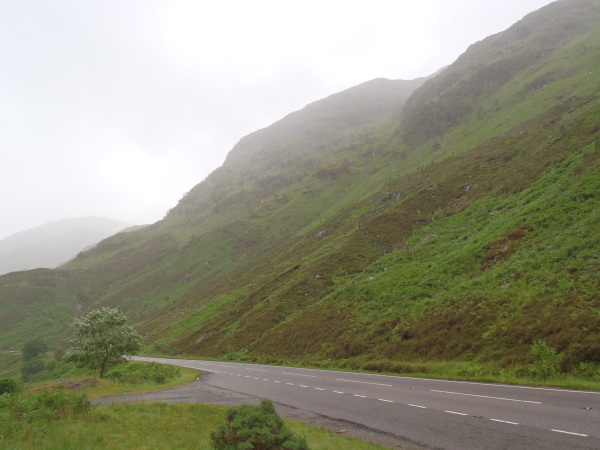
Like many or most of the place names in the Hebrides, "Skye" is Norse. And speaking of languages, 60% of Hebrideans speak "Gallic." That's the Scottish Gaelic. All signs are in "Gallic" and English. Luckily, they also speak a strange form of English which is possible to understand at times.
Once over the new bridge to Skye, we took a 2-hr warm-up hike during which the weather changed from fog to drizzle to heavy rain to peeks of sun. A good intro to island weather. Not for sissies.
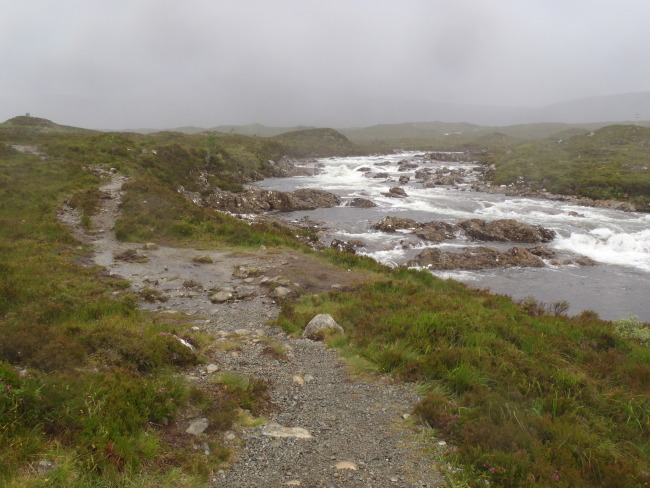
Lotsa stuff below the fold. We do it for you -
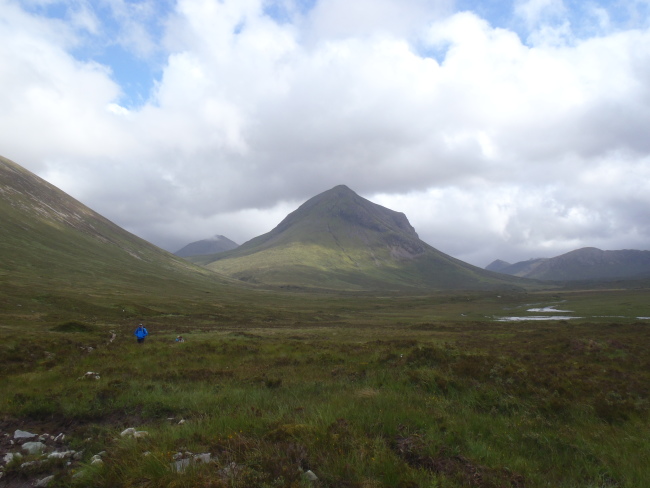
Then we proceeded to our inn on Skye, the Stein Inn (that's the Norse, not German, Stein). An inn since 1790. Cramped quarters but hot water and plenty of good simple food including raspberry-lemon curd crumble.

Front yard of the inn, morning. Yes, some palms. It never freezes and never warms.
Did I mention Scottish toilets? Three-flushers. Low-flow must be an EU rule to "save water" in the wettest place you can imagine.
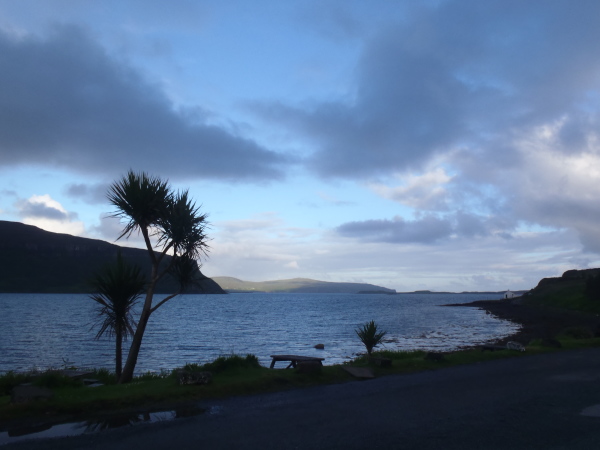
The little pub in there boasted 125 varieties of malt whisky.
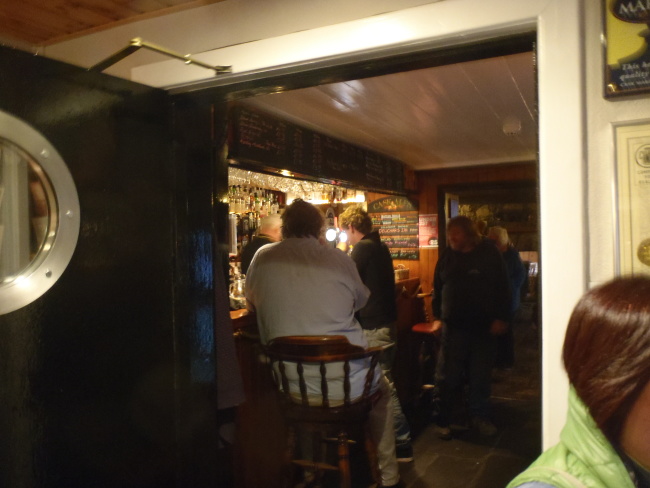
On Skye, we hiked up to touch the base of The Old Man of Storrs (legs, do your thing) in rain, slippery trails and terrible footing. It's a lot further than it looks.
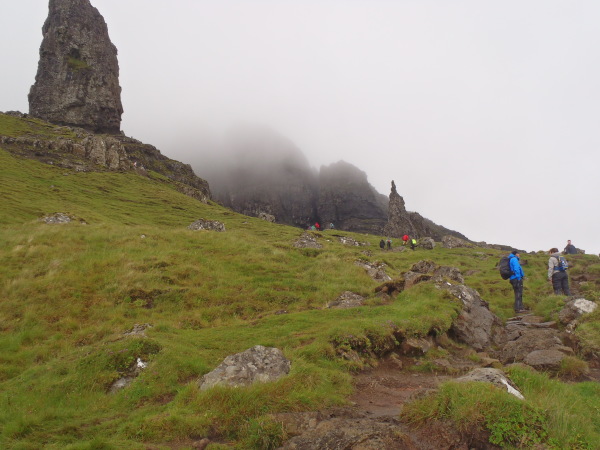
Very bouldery on top
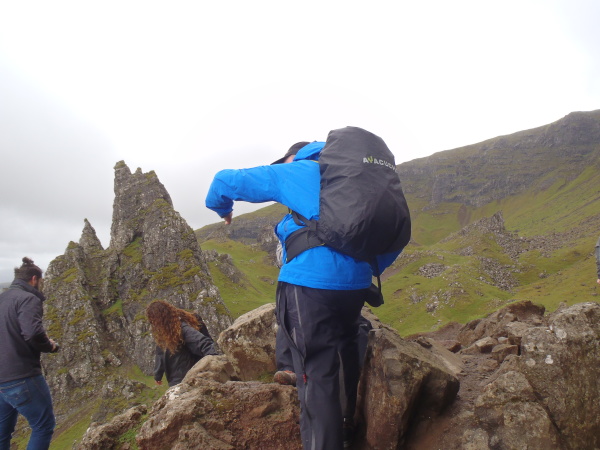
Views from up there when the weather cleared up a bit
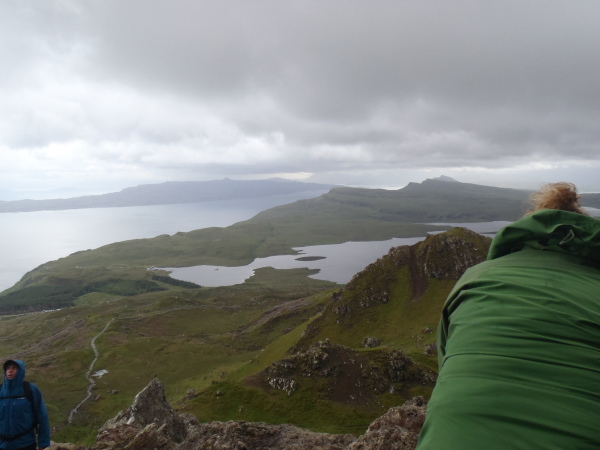
We did the Quiraing Hike which was hairy and treacherous at some points. I sort of hate jumping across gorges to land on slippery boulders that you had to grab with your hands, but the only alternative was shame. We got all the way to "the prison" though.
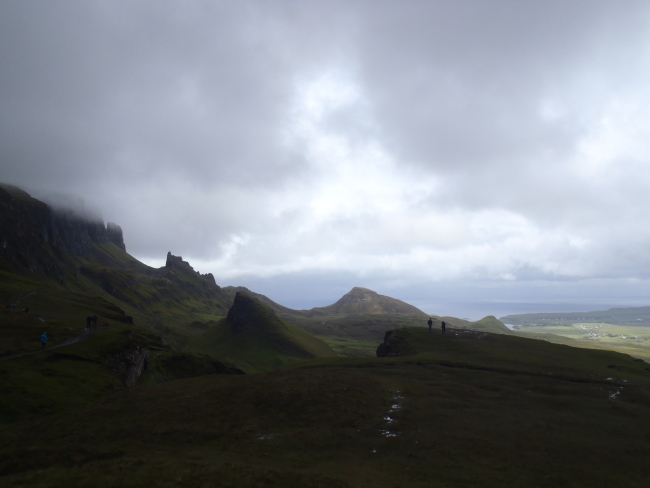
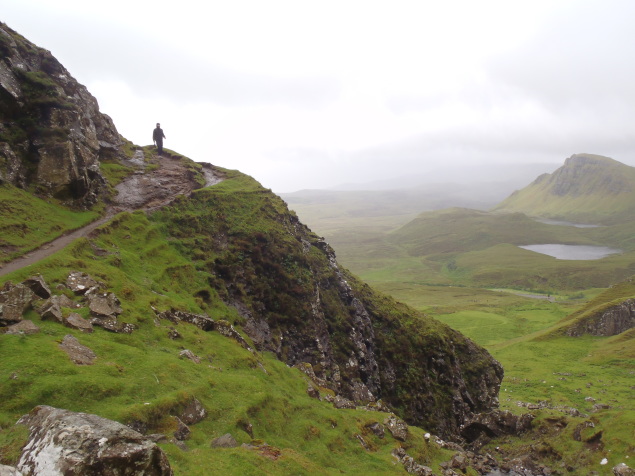
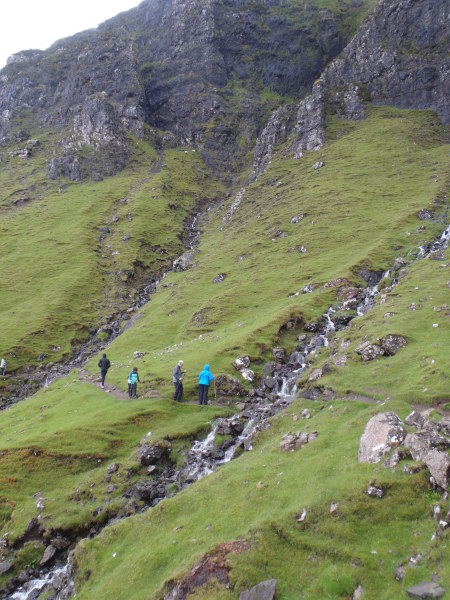
We also had some less-strenuous walks, but we had to get to the top of every high spot, like that rock. It's just human nature

Did I mention that there are sheep and sheep poo everywhere? Obnoxious critters but the wool has value.
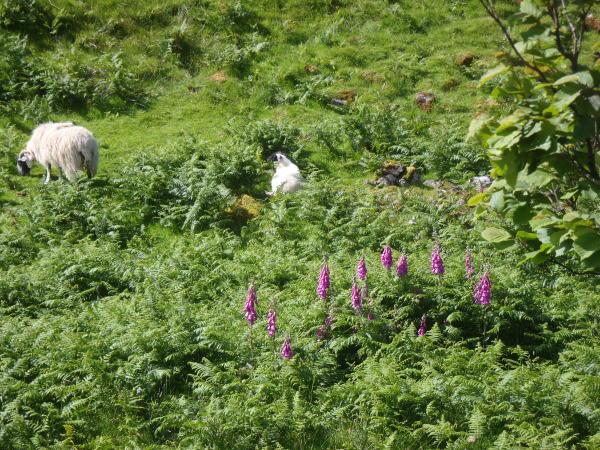
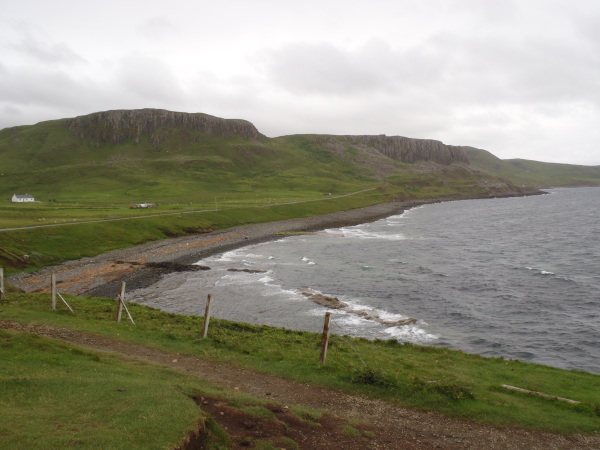
The harbor in the metropolis of Uig, from which we took the ferry north to Tarbert on Harris
